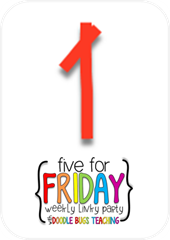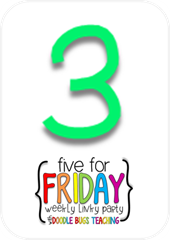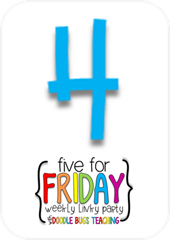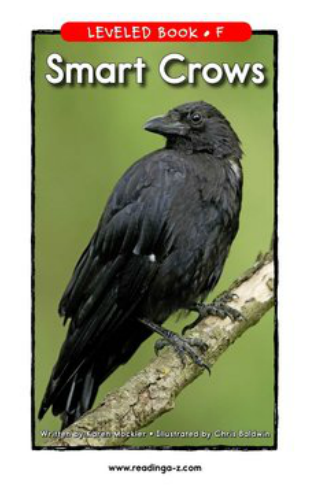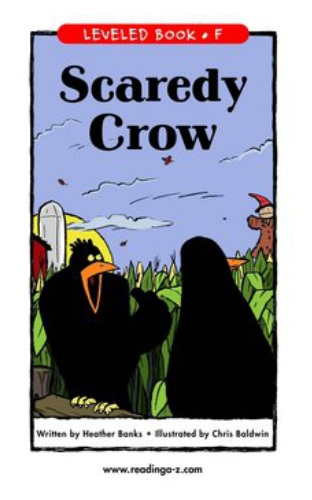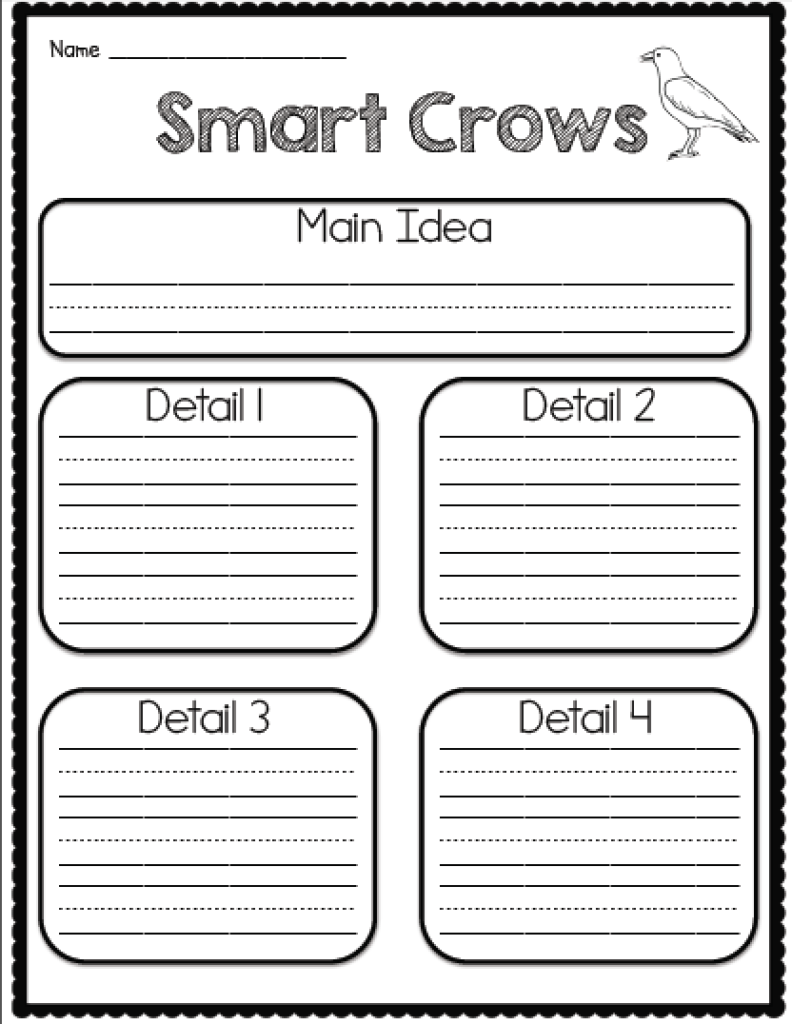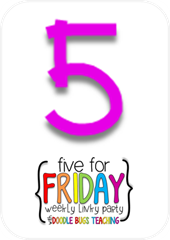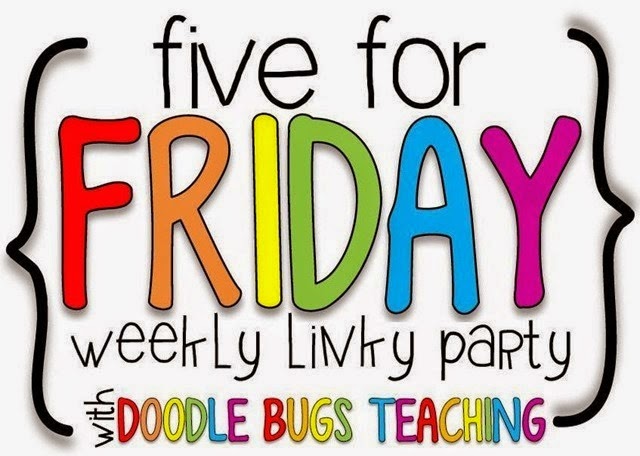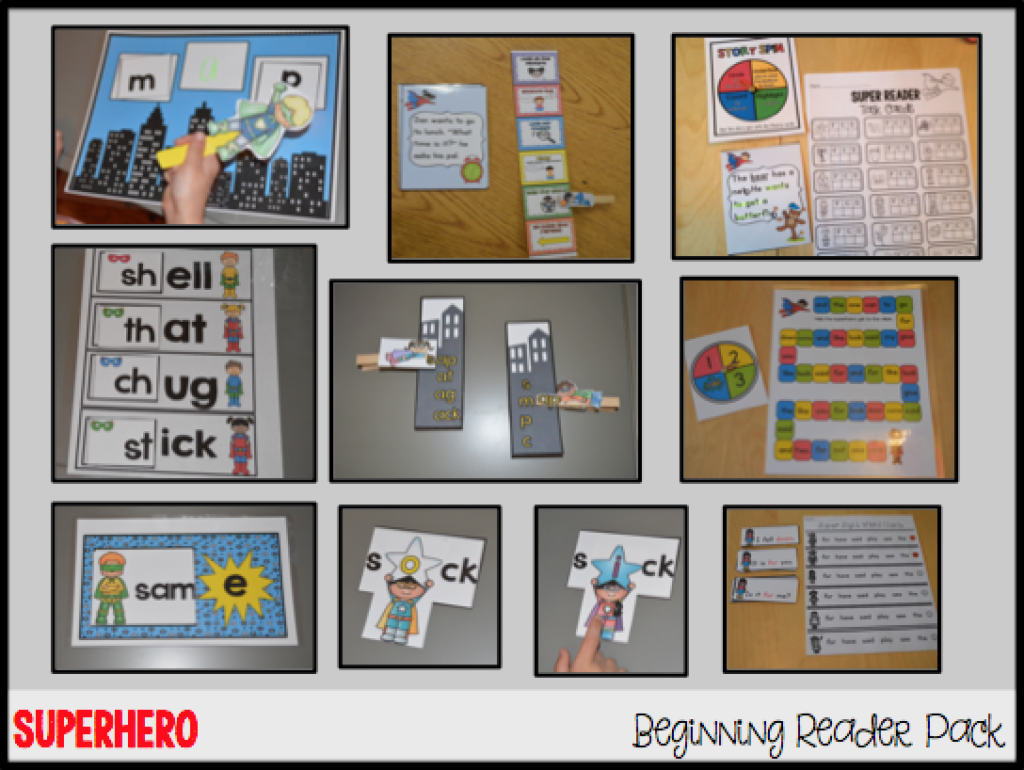K-2 Science of Reading Educational Resources
This week seemed to fly by! I’m linking up with Doodle Bugs Teaching for another Five for Friday.
Writing: Talking it out first
I had fun with this little writing assignment. First, I modeled. I pre-drew three pictures of things I did at the pumpkin patch. I talked about each picture, then I glued them in order. I posted the word, Sequencing, on the board and repeated that word as much as I could. 🙂 I told my students that I by gluing the pictures in order, I was showing them the order of those events at the pumpkin patch. Then I pointed to each picture and used transition words to sequence my story about the pumpkin patch. Just talking, no writing yet.
Then it was there turn. They talked with a friend first about their trip to the pumpkin patch. Then they drew three pictures to tell about their trip. Next, they glued them in order to show the sequence of those events. Last, they each got a chance to “orally write” their story. Now, I’m going to tell you I am completely clueless about whole brain teaching and oral writing. I have watched videos and read posts from the amazing teachers like Farrah Shipley and Christina DeCarbo. But I haven’t completely jumped into the world of Whole Brain Teaching. I REALLY want to though. I need to see more and read more. I do the very basics right now. WBT newbie right here. Just doing the minimum for now and I’ll be slowly adding. I need to just sit in Farrah and Christina’s classrooms for a few weeks and take it all in! For now, I’m taking this slow. For now, I’m just adopting the overall concept of getting them to speak how we want them to write. If I want them to write with sequenced events and transition words, then we need to start talking that way first. This is when I wish I was a classroom teacher. If I had them all day, it would be so much more effective. So I’m doing what I can. 🙂 Here is a super super short video of my kids talking it out. (I purposely did not use the term “orally writing” because it’s not even close to what the WBT experts are doing.) But it is oral and it is gearing up for writing. 😉
I love to practice fluency, comprehension and phonics together with these short vowel reading passages! I love to hear my little first graders read with confidence. I’m all about great literature of course. But sometimes kids need a passage that is repetitive and simple enough for them to be able to actually read. First, we highlighted all of the short i words. (Wait, backup a bit… we had been working on short i words that week so they have been seeing a lot of these words, too.) Then we talked about the picture and title and made our predictions about the story. Students read the passage twice. The first time to work on decoding and using strategies to get through the story. The second read was to focusing on what the story was about. It’s simple enough for them to get through and actually be able to think about the story. Believe it or not, this simple phonetic story does has a character and a problem. 😉 We then go over the questions. I read the questions and they have to reread to show me the answer in the text. (This of course gets them to read the story yet again.)
In this picture, I had the students use their highlighting strips to show the answer to the question before they wrote it.
I love pumpkins. I love fall. I am dreaming of pumpkin spice lattes as I’m doing this activity. It just makes me happy to sound out words with a pumpkin theme. I put this paper in a sheet protected so I could change the vowel using a white board marker. Then we made words. First, I let them have fun and make their own words. Real or silly- they chose. Then I called out a word for them to make. I would say, make the word pod. Now change one letter to make the word rod. This is a great way for them to practice manipulating the sounds in words. Plus it is a quick snapshot assessment for me. If they are unable to do this, that shows me that they are lacking some phonemic awareness.
I read these two books with one of my groups. I love readinga-z.com!! These are perfect for fall. First, we read the fiction story, Scaredy Crow. It’s a cute little story. One of the crows thinks the scarecrow is alive and he’s afraid of it. After reading, I asked students to describe both of the crows. We looked back in the book for evidence to support our statements about the crows. Wishing I would have taken pictures…
Then we spend two days with Smart Crows. This is an informational text about crows. It’s actually super interesting. I had no idea crows were smart. My husband always called them rats of the sky. Not anymore my friends. Don’t underestimate those crows. Anyway, this book was great for getting students to look for evidence! We discussed main idea with this book because it was super obvious. But then we found evidence in the book to support the main idea.
Last, we compared the two books. In the fiction story, one of characters wasn’t very smart. My students were telling me how this book wasn’t realistic because the crow wasn’t very smart in the story. (Never mind the fact that the crows could talk, too!) If you have a subscription to readings-z, you could definitely check these out! Great comprehension lessons here!
Here’s a little freebie for you if you end up reading this book with your guided reading groups. 🙂
Click on the picture to download.
This little cutie turned 3. Look at that face!
Click on the image below to see what other bloggers were up to this week!
How was your week? I would love to hear your comments about anything related to this post! Do you do oral writing? I’ll take your tips or links to more great ideas. 🙂
6.
I know it’s FIVE for Friday and not SIX for Friday, but since it’s Saturday for all you EST people, then maybe I could cheat and do Six for Saturday?
I am FINALLY finished. I hope to get this posted tomorrow. SO excited about it! Stay tuned. 🙂
Latest on Instagram
Latest on Facebook
3 months ago
🔎 Breaking Down the Word "Education"! 🧠✨![]()
![]() Let's take a look at how this word is built.
Let's take a look at how this word is built.![]()
![]() 📢 Sounds: The pronunciation of "education" isn’t as straightforward as it looks! The schwa /ə/ appears multiple times, and the "t" is pronounced like /sh/—a great example of how English words shift in spoken form.
📢 Sounds: The pronunciation of "education" isn’t as straightforward as it looks! The schwa /ə/ appears multiple times, and the "t" is pronounced like /sh/—a great example of how English words shift in spoken form.![]()
![]() 🔤 Graphemes: Graphemes spell sounds. They can be made up of one or more letters.
🔤 Graphemes: Graphemes spell sounds. They can be made up of one or more letters.![]()
![]() 🗣️ Syllables: Syllables have to do with how we pronounce a word. when we say "education", we break it up like this: ed-u-ca-tion. Syllables revolve around vowel sounds and each syllable has one vowel sound.
🗣️ Syllables: Syllables have to do with how we pronounce a word. when we say "education", we break it up like this: ed-u-ca-tion. Syllables revolve around vowel sounds and each syllable has one vowel sound. ![]()
![]() 🔍 Morphemes: Morphemes are the smallest unit of meaning.
🔍 Morphemes: Morphemes are the smallest unit of meaning.![]()
![]() e- (prefix) = "out" (assimilated from ex-)
e- (prefix) = "out" (assimilated from ex-)![]() duce (base) = "to lead"
duce (base) = "to lead"![]() -ate (verbal suffix) = "to make, cause"
-ate (verbal suffix) = "to make, cause"![]() -ion (noun suffix) = "state, act, result of"
-ion (noun suffix) = "state, act, result of"![]() So education literally means "the act of leading out"—a beautiful way to think about learning! 💡
So education literally means "the act of leading out"—a beautiful way to think about learning! 💡![]()
![]() 🧐 Etymology & Relatives:
🧐 Etymology & Relatives:![]() Rooted in the Latin verb ducere ("to lead"), "education" is connected to words like induce, deduce, introduce, conduct, and reduction—all related to movement and guidance!
Rooted in the Latin verb ducere ("to lead"), "education" is connected to words like induce, deduce, introduce, conduct, and reduction—all related to movement and guidance!![]()
![]() 📚 Teaching morphology helps students understand words deeply, making spelling, reading, and vocabulary stronger! How do you incorporate word study in your classroom? Drop your thoughts below! 👇
📚 Teaching morphology helps students understand words deeply, making spelling, reading, and vocabulary stronger! How do you incorporate word study in your classroom? Drop your thoughts below! 👇![]()
![]() Interested in learning more? Check out my blog post about morphology! Comment BLOG if you'd like the link.
Interested in learning more? Check out my blog post about morphology! Comment BLOG if you'd like the link.![]()
![]() #morphology #WordStudy #ScienceOfReading #Education #StructuredLiteracy
... See MoreSee Less
#morphology #WordStudy #ScienceOfReading #Education #StructuredLiteracy
... See MoreSee Less
3 months ago
Do you use blending lines for morphology? This resource has 60 pages of blending lines. Each page focuses on one base. (This set has bases that come from Latin roots.) ![]()
![]() Comment DECODE for the link.
... See MoreSee Less
Comment DECODE for the link.
... See MoreSee Less
3 months ago
FREEBIE! This decoding activity is engaging and effective.![]()
![]() Are you looking for activities to practice words with -ng or -nk (otherwise known as "Glued Sounds")? I have a resource packed with plenty of practice pages.
Are you looking for activities to practice words with -ng or -nk (otherwise known as "Glued Sounds")? I have a resource packed with plenty of practice pages. ![]()
![]() Comment "GLUED" to check this out. This page is a FREE sample in the PREVIEW of the resource. Just download the preview and print this page!
... See MoreSee Less
Comment "GLUED" to check this out. This page is a FREE sample in the PREVIEW of the resource. Just download the preview and print this page!
... See MoreSee Less
3 months ago
Do you use word matrices? I’m a big fan! They are the ultimate graphic organizers for word relatives! ![]()
![]() Comment “matrix” to see more like this! (Plus a digital version)
... See MoreSee Less
Comment “matrix” to see more like this! (Plus a digital version)
... See MoreSee Less
3 months ago
Comment “SENTENCES” if you’re looking for decodable sentences that could be used for phrasing. ![]()
![]() Do you have students who read in a choppy, word-by-word manner? Proficient readers group words together in meaningful phrases. A simple strategy can help developing readers do this, too!
Do you have students who read in a choppy, word-by-word manner? Proficient readers group words together in meaningful phrases. A simple strategy can help developing readers do this, too! ![]()
![]() “Scooping” words into meaningful phrases helps with fluency and comprehension! I’d also throw in that it can lead to word recognition because students are getting more reps with the sentence trying to figure out where phrases are and/or rereading to pause between scoops.
“Scooping” words into meaningful phrases helps with fluency and comprehension! I’d also throw in that it can lead to word recognition because students are getting more reps with the sentence trying to figure out where phrases are and/or rereading to pause between scoops. ![]()
![]() �✨ Beginning readers scoop fewer words at a time and more advanced readers scoop longer phrases for smoother, more natural reading. There isn’t always just one right answer. (For example, this first sentence would sound even better phrasing it like this: A man with a tie/has stain/on his coat.) The goal? Moving from choppy reading to fluent, expressive reading!
�✨ Beginning readers scoop fewer words at a time and more advanced readers scoop longer phrases for smoother, more natural reading. There isn’t always just one right answer. (For example, this first sentence would sound even better phrasing it like this: A man with a tie/has stain/on his coat.) The goal? Moving from choppy reading to fluent, expressive reading!![]() �
�![]() Older students may also use phrases as more of a comprehension strategy. I like to encourage my own middle schooler to break up super long sentences into phrases- comprehending one phrase at a time and building them together to comprehend the sentence.
Older students may also use phrases as more of a comprehension strategy. I like to encourage my own middle schooler to break up super long sentences into phrases- comprehending one phrase at a time and building them together to comprehend the sentence. ![]()
![]() Have you used scooping with your students?📖💡
Have you used scooping with your students?📖💡![]()
![]() #scienceofreading #structuredliteracy #iteachreading #readingfluency #fluencysnippet ##readingspecialist
... See MoreSee Less
#scienceofreading #structuredliteracy #iteachreading #readingfluency #fluencysnippet ##readingspecialist
... See MoreSee Less
